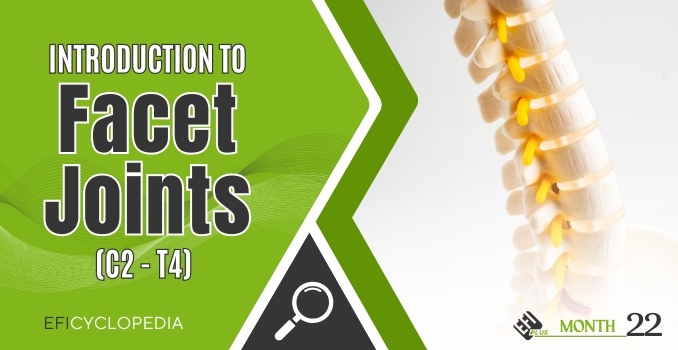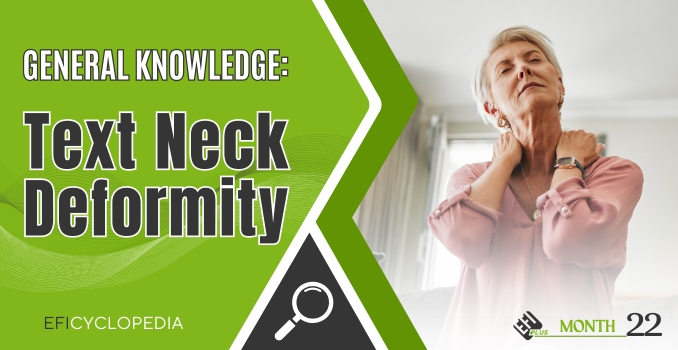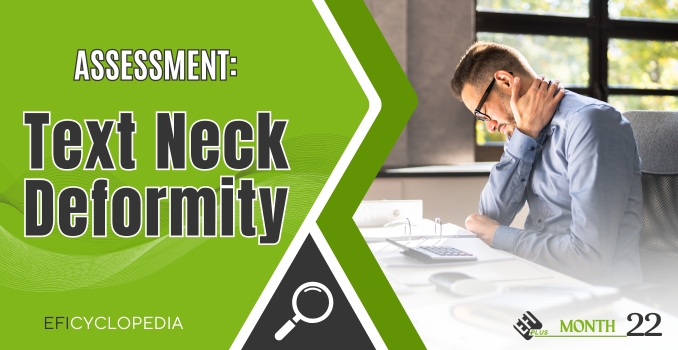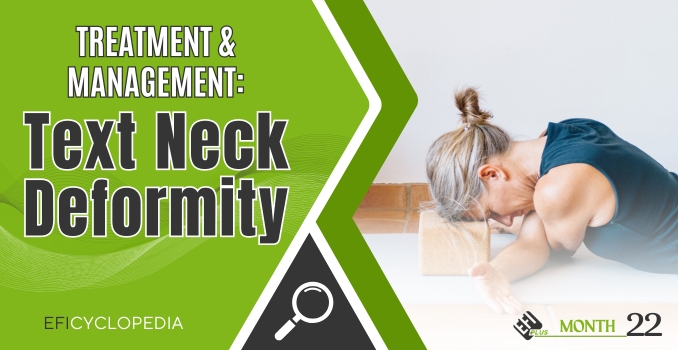Month 22
Facet Joints
MONTH 22 OFFER: TEXT NECK DEFORMITY
Are you feeling the strain from constant phone use or long hours at a desk? Let's fix your neck!
For Month 22 of EFIcyclopedia, we're focusing on a growing concern in today's digital age: Text Neck Deformity. Spending hours hunched over your phone or computer can lead to poor posture and chronic pain in your neck and upper back. But don't worry, we're here to provide you with the knowledge and solutions to relieve pain, restore alignment, and take back control of your neck health.
This month, we'll break down the anatomy of your neck, explore what causes Text Neck, and share practical strategies to prevent, manage, and treat the condition.
WHAT YOU NEED TO KNOW: Understanding Text Neck begins with getting to know the anatomy and structure of the cervical spine. Knowing the key causes and symptoms of the condition will help you pinpoint your pain and guide you towards a solution.
- Understanding the Anatomy: Take a deep dive into the muscles, joints, and bones of the cervical spine. You'll learn how repetitive strain from poor posture impacts the neck and leads to deformities over time.
- Examining the Root: Text Neck occurs primarily due to prolonged poor posture while using smartphones, tablets, and computers. This is compounded by weak neck and upper back muscles, leading to poor spinal alignment. Other contributing factors include muscle imbalances, lack of ergonomic adjustments, and infrequent breaks from technology. We'll explore how these actions cause structural imbalances and muscle tension.
- Know the Signs: Learn to recognize the warning signs early. Persistent pain in the neck, stiffness, headaches, and even shoulder or upper back pain can all be linked to Text Neck. By understanding these symptoms, you can take steps toward relief before they worsen.
WHAT TO DO: There are several strategies to help relieve the discomfort and prevent further damage. Making changes to your posture, strengthening muscles, and taking regular breaks can make a big difference.
- Individualized Management Approach: Engage in guided exercises and stretches that strengthen neck stabilizers, restore natural alignment, and increase flexibility.
- Prevention and Management: The best way to manage and prevent Text Neck is through lifestyle changes and awareness. Some helpful tips include posture awareness, ergonomic adjustments, regular exercise, and occasional breaks.
- Quality of Life Improvement: Text Neck can lead to chronic pain, headaches, and even mobility limitations if left untreated. By correcting posture, strengthening your neck muscles, and staying mindful of your screen time, you can enjoy a pain-free, active lifestyle.
- Informed Decision-Making: With a better understanding of Text Neck, you’ll be equipped to make smarter decisions about how you use technology, take care of your neck, and keep your posture in check. These proactive choices can help you maintain long-term neck health and avoid costly treatments down the road.

Introduction to Facet Joints (C2-T4)
The C2 to T4 vertebral region encompasses the cervicothoracic junction (CTJ)—a transitional zone where the flexible cervical spine connects with the more rigid thoracic spine. This area plays a vital role in head and neck mobility, postural stability, and load transfer between the upper spine and thoracic cage.

Ankle - General Knowledge
The ankle joint is as vital and versatile as the other structures in human anatomy. Delving into its anatomical complexities, physiological roles, and clinical ramifications is a journey that warrants in-depth exploration. Thoroughly scrutinizing the basic principles and latest developments and comprehending every aspect of this extraordinary joint's anatomy, biomechanics, and functionality enables healthcare providers to accurately evaluate patients and create customized treatment strategies aligned with their unique needs and objectives.

General Knowledge: Text Neck Deformity
Neck pain has become a major global cause of disability and is now recognized as a growing public health concern. Its prevalence is high across all age groups and is comparable to that of low back pain. Recent data show that 73% of university students and 64.7% of individuals working from home experience neck or back pain, with nearly 40% reporting reduced productivity because of it.

Assessment: Text Neck Deformity
Text Neck Deformity (also referred to as Tech Neck, Smartphone Neck, or a posture-related variant of Forward Head Posture) is a postural syndrome characterized by the head being held anterior to the trunk, typically accompanied by increased lower cervical flexion and upper cervical extension.

Treatment & Management: Text Neck Deformity
Manual therapy is a hands-on treatment approach used by physical therapists, chiropractors, or other licensed professionals to relieve pain, restore mobility, and improve alignment in the spine and surrounding muscles.
